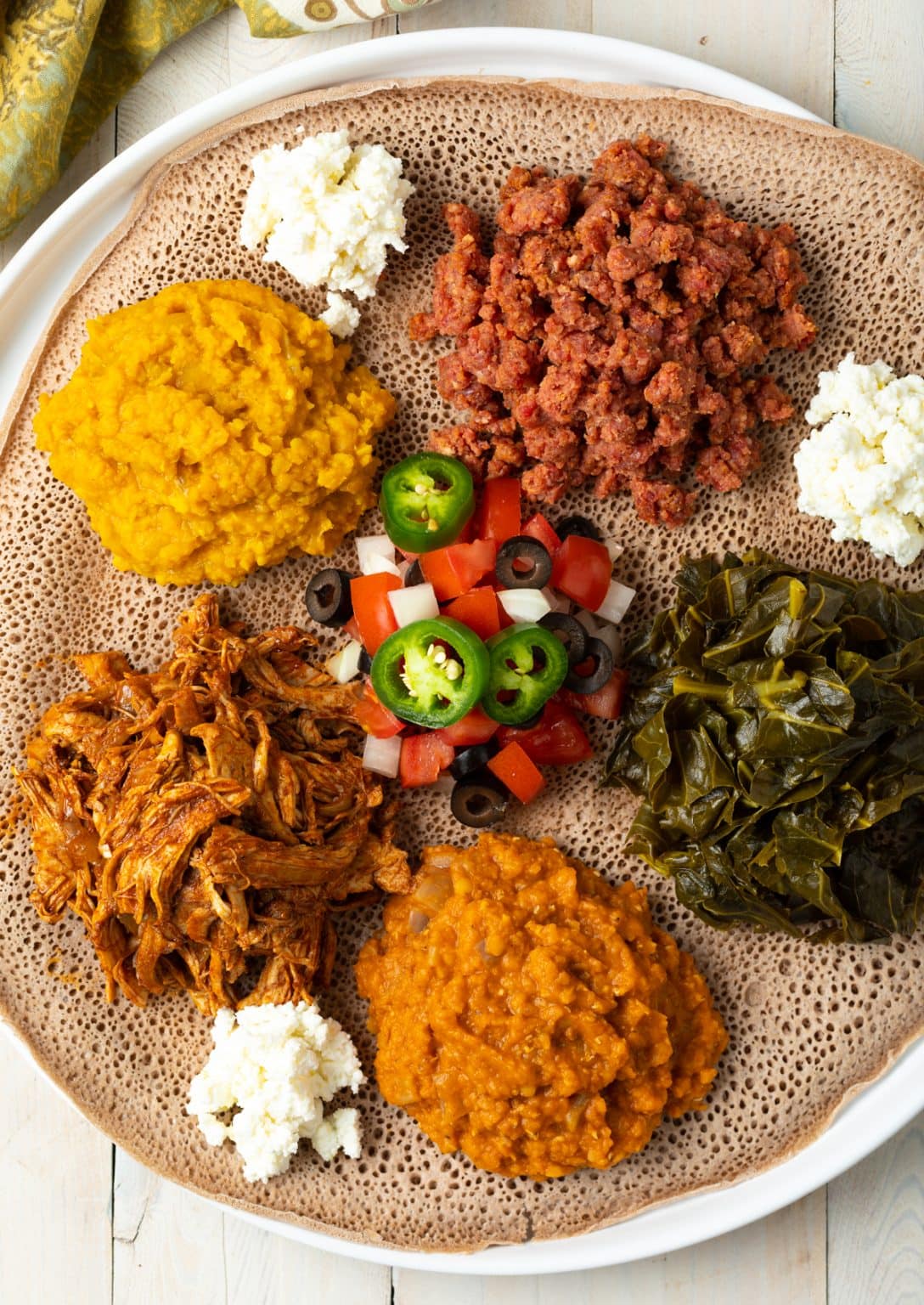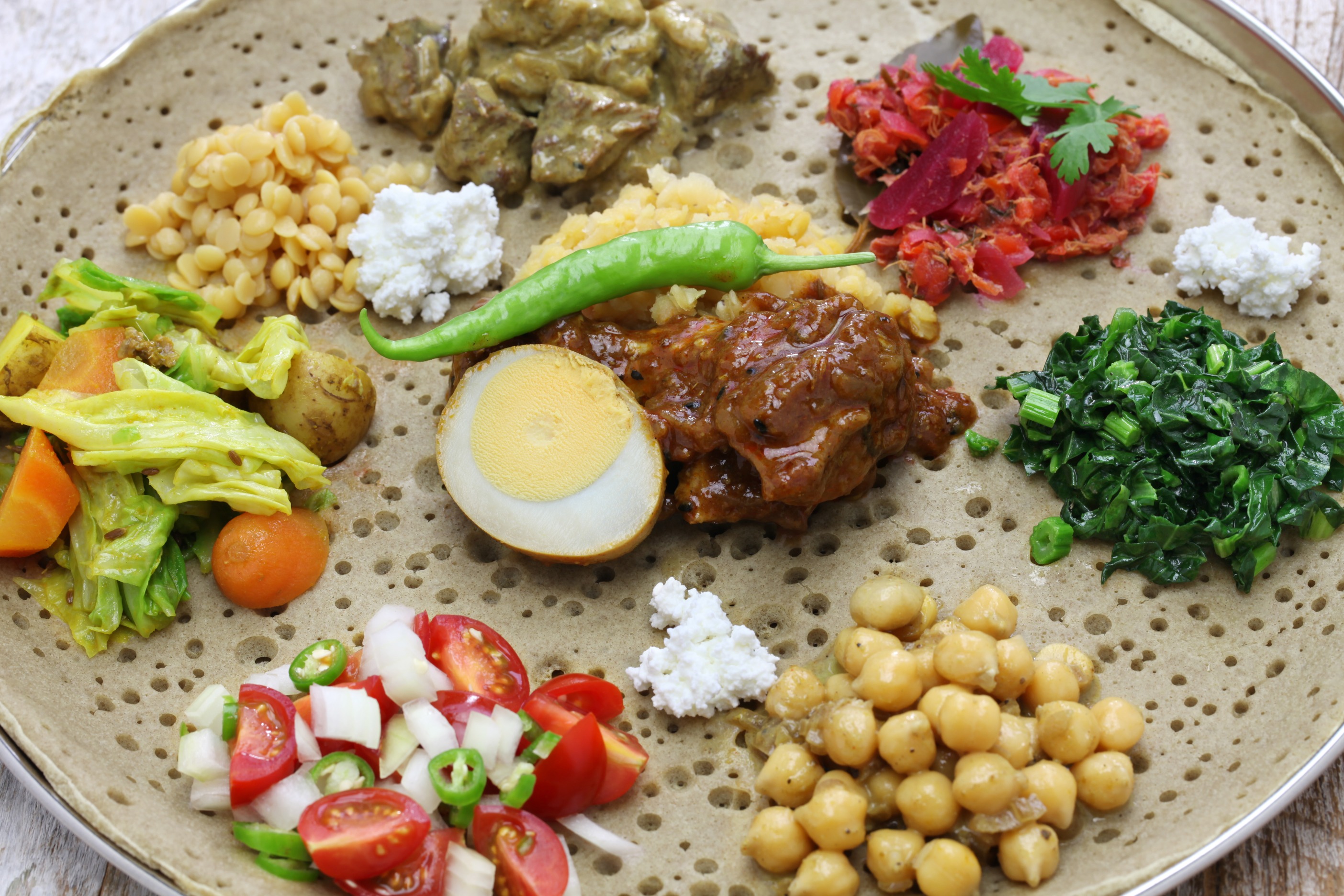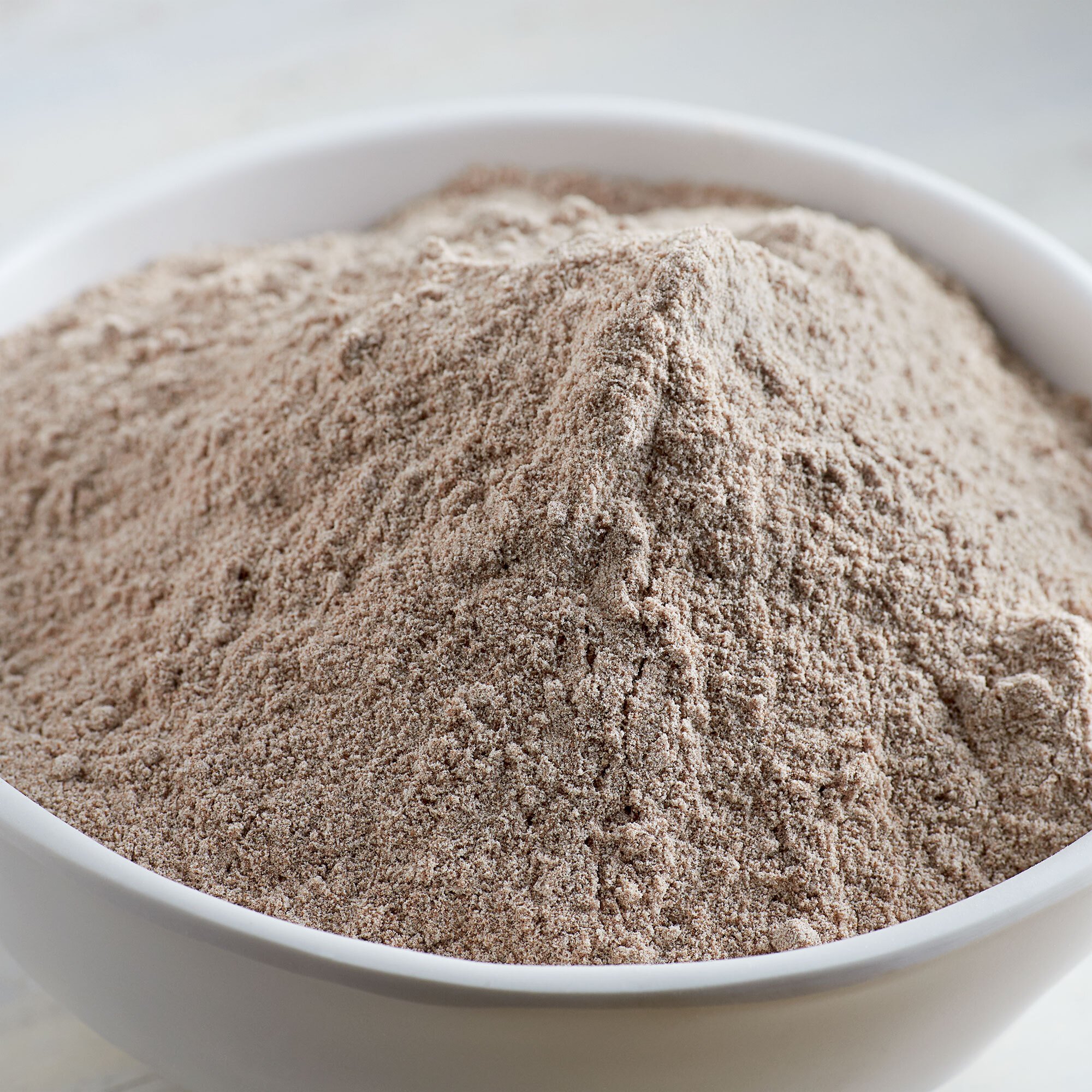How to Make Ethiopian Injera Bread at Home

Ethiopian cuisine is renowned for its rich flavors and unique textures, and at the heart of it all is injera—a sourdough flatbread made from teff flour. This staple is not just a side dish; it's a utensil, a plate, and a culinary experience all in one. If you've ever wondered how to make Ethiopian injera bread at home, you're in for a treat. This traditional recipe involves a fascinating fermentation process that results in a bread unlike any other. So, are you ready to embark on a culinary adventure? Let's dive in!
Understanding Injera: The Heart of Ethiopian Cuisine
Injera is more than just a bread; it's a cultural icon. Made from teff flour, a tiny, nutrient-rich grain native to Ethiopia, injera has a distinctive spongy texture and a tangy flavor that comes from the fermentation process. This bread is not only delicious but also incredibly versatile. It can be used to scoop up stews, wrap around vegetables, or simply enjoyed on its own.
Gathering the Ingredients
To make injera at home, you'll need the following ingredients:
- 2 cups of teff flour
- 2 cups of water
- 1/2 teaspoon of salt
- Vegetable oil for the pan
Teff flour is the star ingredient here. It's gluten-free and packed with nutrients like iron, calcium, and protein. You can find it in specialty stores or online.
The Fermentation Process: Patience is Key
The fermentation process is what gives injera its unique flavor and texture. Here's how to do it:
- Mix the Teff Flour and Water: In a large bowl, combine the teff flour and water. Stir until you have a smooth batter.
- Let it Rest: Cover the bowl with a clean cloth and let it sit at room temperature for 24-48 hours. This is where the magic happens. The natural yeasts in the air will start to ferment the batter, giving it a sour taste and a bubbly texture.
- Add Salt: After the fermentation period, add the salt to the batter and mix well.

Cooking Injera: The Art of the Perfect Pancake
Cooking injera requires a bit of practice, but it's well worth the effort. Here's how to do it:
- Prepare Your Pan: Heat a large non-stick skillet or injera pan over medium heat. Lightly oil the pan with vegetable oil.
- Pour the Batter: Pour about 1/2 cup of batter into the pan, swirling it around to coat the bottom evenly. The batter should be thin, like a crepe.
- Cook: Cook the injera until bubbles form on the surface and the edges start to lift, about 2-3 minutes. Do not flip the injera; it should only be cooked on one side.
- Transfer: Carefully slide the injera onto a plate and let it cool. Repeat with the remaining batter, lightly oiling the pan between each one.
Serving Injera: A Feast for the Senses
Injera is best served fresh and warm. You can use it to scoop up traditional Ethiopian stews like doro wat or misir wat. The spongy texture of the bread soaks up the flavors beautifully, making each bite a delight.
Tips for Success
- Use Fresh Teff Flour: The fresher the teff flour, the better the fermentation process.
- Control the Temperature: The ideal temperature for fermentation is between 70-80°F (21-27°C). Too hot or too cold, and the process may not work as well.
- Be Patient: Fermentation takes time. Don't rush the process; the longer you let the batter sit, the more flavorful your injera will be.

Conclusion
Making Ethiopian injera bread at home is a rewarding culinary experience. From the fermentation process to the art of cooking the perfect pancake, each step is a journey into the heart of Ethiopian cuisine. So, why not give it a try? You'll be rewarded with a delicious, nutritious bread that's sure to impress.
FAQs
Can I use a different type of flour to make injera?
- While teff flour is traditional, some recipes use a blend of teff and other gluten-free flours like buckwheat or sorghum. However, the taste and texture may vary.
How long does injera keep?
- Injera is best eaten fresh, but it can be stored in the refrigerator for up to a week or frozen for up to a month.
Can I speed up the fermentation process?
- The fermentation process can't be rushed, but you can ensure optimal conditions by maintaining a consistent temperature and using fresh teff flour.
What if my injera doesn't have the characteristic bubbles?
- If your injera doesn't have bubbles, it may not have fermented properly. Ensure your batter is thin enough and that you've given it enough time to ferment.
Can I make injera without a special pan?
- Yes, you can use a large non-stick skillet. Just make sure it's well-oiled to prevent the injera from sticking.
Happy cooking!
0 Response to "How to Make Ethiopian Injera Bread at Home"
Post a Comment